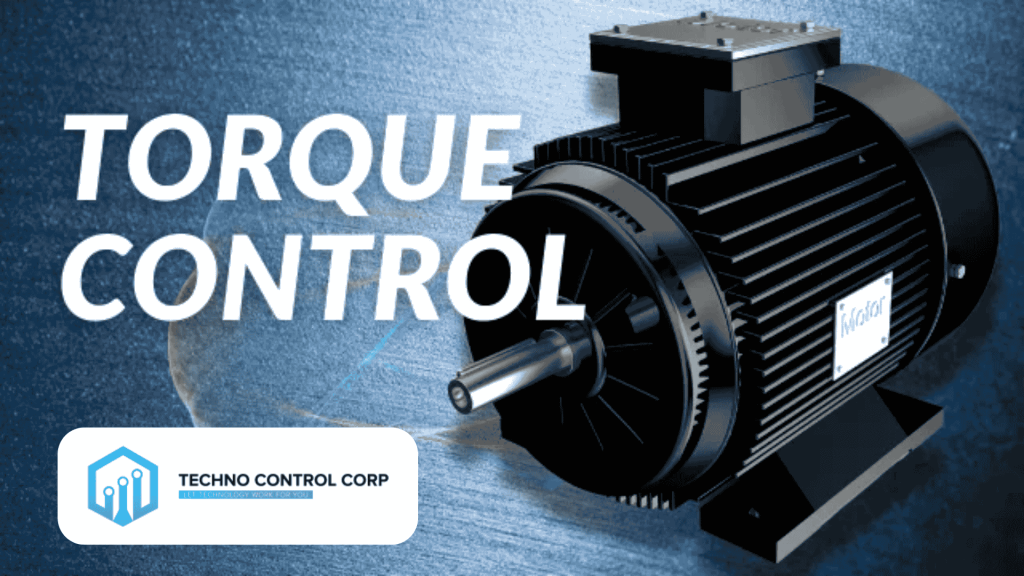
Torque Control and Master-Slave Operation
Introduction
Explanation of Torque Control and Master-Slave Operation
In industrial automation and motor control, torque control and master-slave operation play a crucial role in ensuring efficient and precise performance. Torque control refers to the regulation of the torque output of a motor, allowing machines to operate smoothly under varying loads. Master-slave operation involves the synchronization of multiple motors, where one motor (the master) dictates the behavior of other motors (the slaves), ensuring coordinated motion and load sharing.
Importance in Industrial Automation and Motor Control
Torque control is essential for applications where precise force application is required, such as conveyor belts, robotic arms, and industrial presses. Master-slave operation is widely used in systems that require multiple motors to work in unison, such as large conveyor systems, cranes, and synchronized machinery. These technologies help improve efficiency, prevent mechanical stress, and enhance process reliability.
Understanding Torque Control
Definition of Torque-Control
Torque control is a motor control technique used to maintain or regulate the torque output of a motor rather than controlling its speed. Unlike speed control, which focuses on RPM, torque control ensures that a motor applies a consistent force regardless of speed variations.
How Torque-Control Works in Motor Applications
Torque control works by monitoring the motor’s current since torque is directly proportional to current in electric motors. The motor drive adjusts the voltage and current supply to achieve the desired torque level. This helps in maintaining stable performance under fluctuating loads.
Types of Torque-Control
-
Open-Loop Torque Control – In this method, torque is controlled without feedback. The drive applies a predefined current to the motor, assuming a specific torque output. This approach is simple but less accurate.
-
Closed-Loop Torque-Control – In this method, feedback sensors (such as torque sensors or encoders) continuously monitor and adjust the torque output, providing higher precision and better load handling.
Key Features of Torque Control
Precise Load Handling
Torque control allows machinery to handle loads with greater accuracy and consistency, preventing damage to delicate materials and improving production quality.
Energy Efficiency
By optimizing power consumption, torque control helps reduce energy waste, leading to lower operational costs and improved sustainability.
Overload Protection
Torque control prevents motors from exceeding their maximum load capacity, protecting both the motor and connected mechanical components from damage.
Smooth Acceleration and Deceleration
Maintaining a consistent torque output ensures smooth operation, reducing wear and tear on mechanical parts and improving system longevity.
Applications of Torque Control
Industrial Machinery
Machines such as presses, extruders, and injection molding machines require precise torque-control to ensure consistent output and product quality.
Conveyor Systems
Torque-control helps conveyor belts maintain consistent force, ensuring smooth material transport without jerks or slippage.
Pumps and Fans
In pumping and ventilation systems, torque-control ensures optimal operation under varying load conditions, improving efficiency and reducing energy consumption.
Robotic Arms
Robots use torque control to apply force precisely, enabling delicate tasks such as assembly, welding, and material handling.
Master-Slave Operation in Motor Control
Definition and Working Principle
Master-slave operation is a multi-motor control strategy where one motor (the master) determines the operational behavior of one or more secondary motors (the slaves). The slave motors mirror the master’s speed, torque, or position to ensure synchronized movement.
Role of the Master and Slave Drives
-
Master Drive – The master motor controls the overall motion and sends commands to the slave motors.
-
Slave Drives – These motors follow the master’s command, adjusting speed, torque, or position as required.
Communication Between Master and Slave Systems
Master-slave systems use communication protocols such as CANopen, Modbus, and EtherCAT to transmit signals between drives. This ensures real-time synchronization and seamless coordination.
Types of Master-Slave Configurations
Speed Synchronization
In this mode, all motors run at the same speed, ensuring uniform movement across the system. This is common in conveyor belts and textile manufacturing.
Torque Sharing
This configuration ensures that multiple motors share the load evenly, preventing one motor from overloading while others remain underutilized. This is useful in applications like heavy-duty cranes and elevators.
Load Balancing
Load balancing distributes mechanical stress among multiple motors, extending their lifespan and improving system reliability. This is essential in printing machines, paper mills, and rolling mills.
Advantages of Master-Slave Operation
Improved System Stability
Master-slave operation ensures consistent and stable performance, even in complex multi-motor systems.
Equal Load Distribution
By distributing the load evenly, mechanical stress is minimized, reducing maintenance costs and extending equipment life.
Reduced Mechanical Stress
Synchronized motor operation prevents sudden jerks and load imbalances, protecting mechanical components from premature wear.
Enhanced Operational Efficiency
A properly configured master-slave system improves productivity, reduces downtime, and enhances process control.
Implementation of Torque-Control and Master-Slave Operation
Hardware and Software Requirements
-
Variable Frequency Drives (VFDs) for controlling motor speed and torque
-
Communication modules for master-slave coordination
-
Torque sensors and encoders for closed-loop control
-
Industrial PLCs (Programmable Logic Controllers) for advanced automation
Configuring a Master-Slave System
-
Connect the master and slave drives using a communication network.
-
Define control parameters such as torque, speed, or position synchronization.
-
Program the master drive to send control signals to the slave drives.
-
Test and adjust synchronization for optimal performance.
Programming and Parameter Settings
-
Set torque limits to avoid overload
-
Configure PID controllers for accurate feedback adjustments
-
Implement safety protocols to prevent motor failure
Challenges and Solutions
Common Issues in Torque-Control and Synchronization
-
Torque fluctuations can cause unstable performance.
-
Communication delays in master-slave systems may lead to synchronization errors.
-
Load imbalances can cause excessive wear on one motor.
Troubleshooting Techniques
-
Use high-quality sensors and real-time feedback loops to stabilize torque-control.
-
Optimize network latency to ensure timely signal transmission between master and slave drives.
-
Implement dynamic load balancing algorithms to distribute forces evenly.
Conclusion
Summary of Key Points
-
Torque control ensures precise force regulation, improving motor efficiency and durability.
-
Master-slave operation enables synchronized multi-motor control, ensuring smooth and coordinated motion.
-
These technologies play a vital role in industrial automation, enhancing efficiency, safety, and reliability.
Why Torque Control and Master-Slave Operation Are Critical for Industrial Automation
Industries rely on torque control for precision and energy savings and on master-slave operation for multi-motor synchronization. Implementing these techniques properly reduces costs, prevents mechanical failures, and enhances overall productivity.
